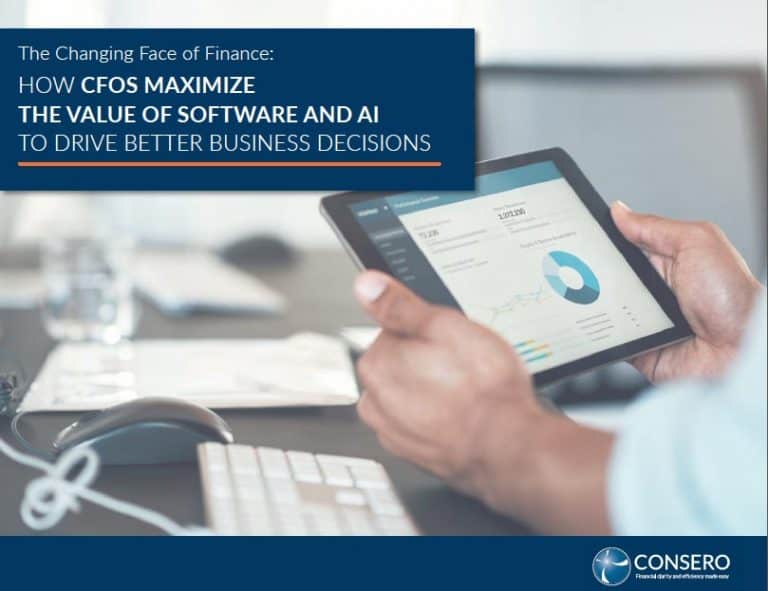CFOs are increasingly tasked with leveraging software and artificial intelligence (AI) to enhance their organization’s financial performance and decision-making, yet our 2024 CFO Survey found that nearly 9 in 10 financial leaders struggle to derive value from their technology investments.
This e-book will cover the steps CFOs should take to maximize the value of these tools, including:
1. Shift the Finance Team to Analytical Roles
To fully leverage software and AI, CFOs transform the finance team’s focus from repetitive tasks to value-added analysis.
- Evolve Roles: Transition finance professionals into analysts who interpret data and provide strategic insights.
- Focus on Strategy: Align financial functions with broader organizational goals like growth and funding strategies.
- Enable Efficiency: Implement cloud-based systems to centralize data, eliminate redundancies, and empower faster decision-making.
2. Engage Expert Builders
CFOs ensure successful implementation by appointing the right leaders to drive financial transformation.
- Identify Transformation Leaders: Select individuals with experience in restructuring finance operations to lead the change.
- Prioritize Expertise: Choose leaders with a proven track record in building scalable and efficient financial systems.
- Dedicate Resources: Ensure these leaders have the time and support necessary to create impactful changes.
3. Realign the Finance Function
CFOs restructure their finance teams and processes to better utilize software and AI.
- Centralize Data: Use cloud technology to create a unified source of truth, enabling reliable analytics and reporting.
- Standardize Processes: Create consistent workflows that streamline operations and prepare the organization for AI integration.
- Automate Repetitive Tasks: Deploy automation tools to reduce manual efforts, allowing the finance team to focus on strategic initiatives.
4. Choose the Right Path for Transformation
CFOs evaluate different transformation models to determine the best approach for their organization.
Path 1: Maintain Current Systems
- Assess Capabilities: Ensure existing systems meet organizational needs and can scale for growth.
- Optimize Processes: Enhance current workflows to deliver timely and accurate financial reporting.
Path 2: Build In-House or Shared Services
- Evaluate Resources: Determine if internal teams have the expertise to develop new systems and processes.
- Leverage Shared Services: Consolidate certain functions to improve efficiency and reduce costs.
Path 3: Outsource or Finance as a Service (FaaS)
- Adopt Comprehensive Solutions: Engage FaaS providers to integrate technology platforms, standardized processes, and CFO-level strategic support.
- Consider Key Factors: Evaluate the service model, process alignment, control mechanisms, and ease of implementation when outsourcing.
Download the e-book below to learn more.







